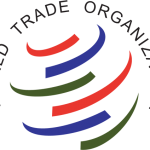Natural resources are natural components and materials that exist in the world without any input or effort from humans; they occur naturally. These resources are very different and come in diverse qualities, they range from living to non-living, renewable resources to non-renewable resources, tangible to non-tangible resources and many more.
Natural resources are very essential in the survival of all humans as well as other living organisms. All products of the world use natural resources as their component; this may come in the form of natural chemicals, air, water or energy. The high demand for natural resources across the globe has led to their rapid depletion; as a result of this many countries of the world are calling for better means of managing and sustaining the use of these natural resources.
Table of Contents
Types Of Natural Resources
Due to their complexity and diversity, natural resources can be classified into different categories as outlined below :
- Renewable Natural Resources
This kind of resource referred to the resources that can naturally regenerate themselves even after use. Renewable respires include natural vegetation, water, wind, animals as well as solar energy; all these resources are present in nature and often in abundance.
- Non-renewable Natural Resources
Non-renewable resources are those components and resources that take too long to replenish after it has been used, it also comes in very limited quantities. These products include precious materials, rocks, crude oil, minerals, and the likes. In addition to that, some other endangers animals are classified among non-renewable due to the fact that their mortality rate is way higher than their rate of reproduction.
- Biotic Natural Resources
Biotic natural resources are those living resources that are existent naturally in the environment we live in; they are things we see all around us. Biotic natural resources include wildlife, forests, fossil fuels and more.
- Non-biotic Natural Resources
Non-Biotic natural resources include natural products in the environment, however, unlike biotic mayoral resources, non-biotic are non-living. Some of these resources include metals, water, rock, mineral resources, and many others.
- Stock Natural Resources
There are many natural resources in the world, while many of them are being utilized, a lot of them are still yet to be exploited due to lack of human skills, power, and technology that could be used to extract some of these natural materials. Due to these reasons, such natural resources are classified among stock resources; implying that they will be of more use in the nearest future.
These 7 Countries Developed Without Natural Resources
All countries of the world are not created equally, some possess more natural resources while others have less. A country that has more natural resources will not need to import them as the availability of many raw materials has the opportunity to increase the economic growth and development of the country. They also gain more liquidity from the export of their raw materials, contrarily, countries with less natural resources seem to suffer from this process. Due to few, little or no resources in their country, they will have to import a lot of natural resources from other countries, this makes them spend more on importation.
While some of these countries have to spend more on natural resources, a lot of them still tend to thrive and perform well economically. Some of these countries that are well developed without natural resources are but not limited to:
- Japan
Due to the nature of their country- a volcanic island and mountainous country- Japan has a very less amount of natural resources to give adequate support to its economic growth and development. The country had to depend on the importation of raw materials to support its large population and growing economy. However, with exports of electronics, automobiles, semiconductors, conductors, steel, iron and copper, Japan was able to sustain economic growth. Other exports include processed foods, textiles, shipbuilding, pharmaceuticals, petrochemicals, bio-industry, and aerospace.
- South Korea
South Korea makes export of over $550 billion through massive industrialization. With very little natural resources and overpopulation, South Korea was able to survive its economy with core exportations in automotive, telecommunications equipment, computers, ships, steels, high tech electronics, petrochemicals, and information displays. South Korea still seems to be expanding economically while ranking as one of the best performers among developed countries of the world.
- Italy
Although Italy does not boast of beautiful and mindblowing skyscrapers, it remains one of the top world countries with a growing economy. While Italy lacks the power of natural resources, it remains a world-class industrial nation making over $530 billion in clothing and textiles, engineering products, transport equipment, automotive, chemicals, beverages and tobacco, food, refined metals as well as high-end luxuries consumer products.
- Hong Kong
Due to Hong Kong’s size, it has a very small land with less natural resources, therefore, it imports raw materials and most of its food from other countries. Even at this huge rate of importation, Hong Kong has been able to manage its own industrialization to make over $440 billion from exportation.
- Singapore
With no natural resources and having a very small population among other countries on this list, Singapore proves to the world how a tiny island can become one of the most prosperous nations across the globe. Aside from becoming prosperous, Singapore also becomes an advanced country raking in $420 billion from the exportation of machinery and equipment, food and beverages, electronics, pharmaceuticals, chemicals, and refined oil. Singapore has to import everything they needed including water from their neighboring country- Malaysia.
- Belgium
Except for coal, which is no longer economical for exploitation, Belgium has no natural resource that it can utilize to make some funds for the development and growth of her country. Thus, it imports raw materials from other countries of the countries, especially when it is surrounded with industrially powerful countries like France, Germany and the United Kingdom, Belgium has never had the opportunity to build a very strong manufacturing base. Instead, it focuses more on high tech and light industries; thereby becoming major exporters in finished diamonds, machinery, and equipment, foodstuffs as well as metal and metal equipment.
- Switzerland
Switzerland seems to be in a very different condition when compared with other countries on this list, this is due to the fact that the country is landlocked; however, Switzerland has proved that being landlocked is never a barrier to the growth and development of a comité I-economically- while raking in over $350 billion with no natural resources. Being around high power countries like France, Germany and the likes, Switzerland had fewer chances of thriving with technology and industrialization, instead, it engages in food processing and confectionary which earns her many multinational food companies like Nestle and the likes.
Countries With the Least Natural Resources
In any country, natural resources are the basic determinant of how rich or poor the country will be in terms of economic development. Natural resources also increase the possibilities of the country to be self-dependent and self-sufficient.
Contrarily, some countries have probes that how rich or poor a country would be is not determined by its natural resources. The latter said it is also made visible in countries like Sierra Leone and Liberia which has an abundance of raw materials but has a very slow economy. Also, the likes of Singapore and Hongkong clearly shows how a country with little or no raw materials can thrive economically. That being said, here is a list of countries with the least natural resources.
- Vatican City
- Costa Rica
- Switzerland
- Belgium
- Taïwan
- Japan
- Hong Kong
- Gibraltar
- Singapore
- Italy
Countries With the Most Natural Resources
Natural resources have been made well known in previous lines to be commodities and raw materials that came to development and existence without any action or effort by human beings on the surface of the earth. These natural resources are raw materials that are utilized in the production of many products which we use in this present age. The cost of these resources usually varies from how useful they are, their quality, how to find them as well as whether they are high in demand or otherwise. In most cases, these materials, either raw or processed, are usually costly, therefore; they rwmainsntje backbone of countries that possess them. Some countries that have them in abundance include:
- China
- Saudi Arabia
- Canada
- India
- Russia
- Brazil
- United States
- Venezuela
- The Democratic Republic of the Congo
- Australia
Countries that Became Rich and Prosperous Through Natural Resources
When you hear about rich countries in the world, what comes to your mind? Also, what comes to your mind when you hear of the smallest nations of the world? Read through these lines and find what will amaze you about countries that became rich through the abundance and utilization of their natural resources.
While some countries have gathered riches through industrialization and exporting food materials, a lot have been able to develop and grow through their raw materials and natural resources; some of these countries include but not limited to:
- Qatar
- Macao
- Luxembourg
- Iran
- Brunei Darussalam
- Ireland
- Norway
- United Arab Emirates
- Kuwait
- United States
Poorest Countries With Natural Resources
While many countries of the world have been able to develop their economy through natural resources, it is interesting to know that what some countries lack and still develop (natural resources), some countries possess them in abundance and have still remained poor over the decades. Some of these countries suffer from natural disasters, overpopulation and oftentimes bad government- usually poor and dictatorship leaders. These countries include:
- Liberia
- The central African Republic
- Burundi
- The Democratic Republic of the Congo
- Niger
- South Sudan
- Malawi
- Mozambique
- Sierra Leone
- Madagascar
- Comoros
- Togo
- The Gambia
- Guinea-Bissau
- Haïti
- Burkina Faso
- Thailand
To sum up, all that has been said, it becomes obvious that proper utilization and management of natural resources is a practice that all nations should be involved in. This is to avoid the tragedies of countries that have them in abundance and have failed to create wealth with their raw materials.









